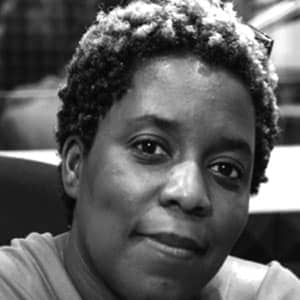
- Catherine Anthony Boldeau; Tina Brooks
- September 19, 2022
Facebook
Twitter
WhatsApp
Telegram
Email
When The Music Fades…
Cathy Boldeau talks to Tina Brooks about congregational music in a virtual & hybrid church
Singing, As A Part Of Religious Service, Is As Much An Act Of Worship As Is Prayer. We Are Finally Emerging From This Pandemic, And Although The Virus Is Still Around, We Can Gather In Worship Spaces And Sing Together. And As We Offer Our Songs Of Worship And Praise, Let Us Remember Who Is At The Heart Of Our Worship.

In March 2020, at the beginning of the pandemic, as the virus raged like a demented dragon, news channels across the world broadcast quarantined Italians in harmonious voices on their balconies. At a time when mingling was forbidden, except with household members, the sight of these songbirds provided the world with a sense of normality and the community at a time when it was most needed.
However, Christians and people of other faiths found themselves devoid of in-person congregational singing. Dr Robert C Mann said,’ Churches with dynamic congregational singing radiate spirituality and witness. Hymns, prayers, and liturgies accumulated through centuries of Christian wisdom provide essential and positive resources for effective worship’.
CAB: As a prolific musician, what were your initial thoughts about restrictions on singing in churches at the start of the pandemic?
TB: The infectious nature of COVID-19 meant congregation singing was forbidden, so my initial thoughts were that of relief when ‘professional singers’ were encouraged to provide worship music for live and recorded services. Worship without singing doesn’t feel like worship to me, so listening to ‘professional singers’ seemed like the next best option, given the unprecedented circumstances. Singers and band musicians provided a service that improved the worship experience of all worshippers. When the number of singers was low, it put them under pressure to blend and provide a high-quality musical experience. Before lockdown, ensemble singing was a one-off experience in that no one could listen to it again after the service. However, with the onset of the recorded and live-streamed church, all worship services could be analysed again and again. In my opinion, our church musicians have been able to reflect and improve their skills through this phase of our church history. They have also learned many important lessons along the way and improved their music technology and production skills for music and video editing.
CAB: During the pandemic, you were able to record several songs by recruiting singers and musicians. What was the highlight of these recordings?
TB: At the start of lockdown, a friend sent me a video made by singers and musicians from a Sunday church. I was so impressed that singers recording on their smartphones in their bedrooms and kitchens could sound so good blended with musicians who recorded in various locations and mixed using music software and laptops. I sent it to my church’s media team and asked if they could produce video editing at this level. When they confirmed they could, on the condition that the sound was mixed by someone else, I set about finding a solution. I had some experience using Logic Pro music production software many years ago, thanks to Marlon Rhamie, so I was happy to mix the vocal tracks. I partnered with Dwight Johns to work on producing instrumental tracks, and a solution was born. After watching many YouTube videos on music production, I could mix vocals to a more professional standard and felt comfortable producing for Willesden SDA Church. I partnered with my daughter Melody to create a final mix, working with Dwight, my nephew Jordan Samuel, and other musicians up and down the country and collaborating with singers and musicians from Willesden. Other churches, all of whom gave of their time and efforts so generously throughout the pandemic. It was stressful at times, but it was an absolute honour and privilege to work with many singers and musicians, including our Children’s Choir, Teens Praise Team, Youth Praise Team, and our adult Praise Team.
CAB: How can churches continue to make their music engaging in hybrid worship?
TB: One of the benefits of analysing worship services is that our expectations are higher and our palate more sophisticated. For churches to make music engaging in a hybrid worship context, several approaches are required, for example, clear communication between worship leaders, their congregation, and the pastoral team to agree on various music styles. Another is the professional development of the technical team working to an expert level in the background, providing an essential service to facilitate worship online and live in the building to the most professional level possible. The pandemic forced us to think outside the box, so now we can find solutions that were previously unheard of. This means we can integrate live services with pre-recorded elements, allowing the inclusion of a variety of items that can lift service and inspire a congregation. Singing, as a part of religious service, is as much an act of worship as is prayer. We are finally emerging from this pandemic, and although the virus is still around, we can gather in worship spaces and sing together. And as we offer our songs of worship and praise, let us remember Who is at the heart of our worship.
Catherine Anthony Boldeau is the Commissioning Editor for the Communicator
Tina Brooks is Music Director for the Willesden SDA Church in West London

How Should Christians be Different?
September 6, 2023

The Pastoral Caregiver – Bearer of Stories
September 6, 2023

What Takes to be Different?
September 6, 2023

The Beauty of Diversity Within the Body of Christ
September 6, 2023

The Butterfly, an Object Lesson of Transformation
September 6, 2023

Mitigating the Risks of Cultural Compromises
September 6, 2023

Embracing Christ-Centered Counterculture
September 6, 2023








